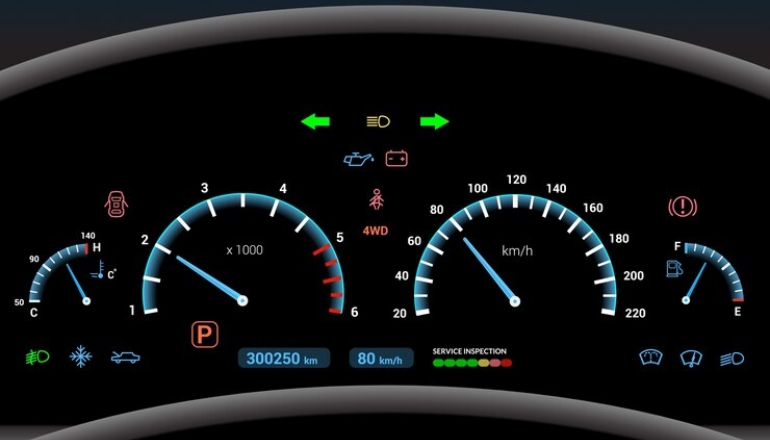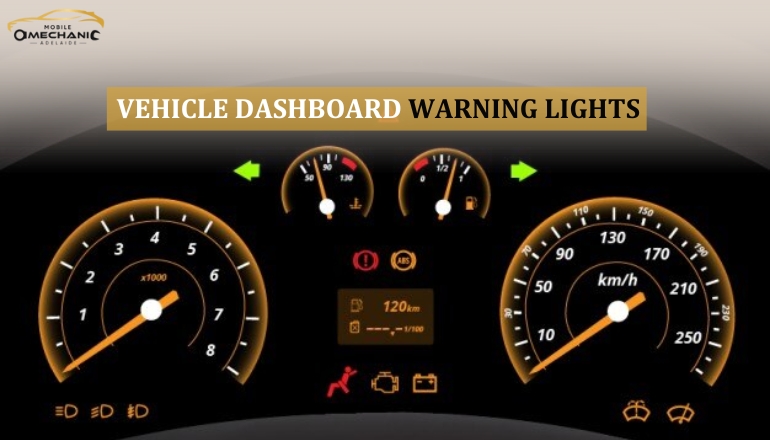Modern automobiles use a network of sensors to connect their electrical systems to dashboard symbols and warning lights. The current blog will help you understand the most common dashboard warning lights and their meanings. Dashboard warning lights come in two main types: red and orangeing lights. The current blog will help you understand the most common dashboard warning lights and their meanings. Dashboard warning lights come in two main . When your car’s warning light is red, it usually indicates a serious problem. Let us quickly understand what it signifies.
This can indicate a low engine oil pressure, an overheated engine, or a brake system issue. When the engine management(the computer that controls the engine) notices a problem, an orange dashboard warning light is illuminated. A car with orange lights on the dashboard can be driven for a while, but it should be taken to the nearest service centre as soon as possible for diagnosis and car dashboard repair. You can also search for vehicle inspections in Adelaide. If you cannot find a vehicle inspection centre, search for words like servicing near me, and you’ll get a nearby repair station.
What are Vehicle Dashboard Warning Lights?
Modern cars have sensors and devices that monitor your vehicle’s behaviour. Knowing what the warning lights on your car’s dashboard represent might help you avoid a malfunction or complete failure. In the below paragraphs, you will get the information required to understand the numerous yellow and red warning lights on your dashboard, their significance, the seriousness of the problem, and what to do when they appear. Your dashboard’s vehicle warning symbols and lights use a color-coded traffic light system:
- Green: The system is operating correctly or is currently in use.
- Yellow: There seems to be a problem with something; please be cautious and investigate as quickly as you can.
- Red: There is a major and potentially dangerous problem – cease driving as soon as possible.
What Should I Do if a Dashboard Warning Light Comes in My Car?
A mechanic’s mobile dashboard is equipped with coloured warning lights that, when illuminated, may signal issues and malfunctions with the engine or other vehicle components. It is extremely essential to comprehend the meaning of car warning lights and what to do if they illuminate.
First, it is crucial to understand that car warning lights have three different colours. These car dashboard signs are usually bifurcated into green, yellow, and red. Position lamps and direction indicators, part of the driver assistance system, are displayed as green lights. They should not worry the driver at all. Yellow and red lights, on the other hand, may signal a problem or even the necessity to stop at a service centre instantly.
Most Common Car Dashboard Warning Lights

Below are some of the car dashboard warning lights. One should remember the most common warning lights to solve the problems immediately. If you ever encounter the following problems, visit nearby mobile car maintenance. Timely checkups of the car can be done via mobile vehicle inspection. Below are the car warning lights:
- Windshield Defrost– Turn on when the window defrost is in operation.
- Washer Fluid Reminder– Turn on when the windscreen washer fluid reservoir is about to get empty.
- Rear Window Defrost– Turn on when the rear window defrost is in operation.
- Low fuel level– Turn on when the car runs out of fuel and it soon needs to be refilled.
- The key is not in the vehicle– Turn it on when it is not in the car.
- Hood/bonnet open– Turn on when the hood or the bonnet is not closed properly.
- Hazard light on– Turn on when the hazard light is turned on.
- Fan– Turn on when the internal ventilation or the fan is in operation.
- Door ajar– Turns on when one or more doors are open or not closed properly.
- Direction or signal indicators– Turn on when the left or right signals have been activated.
- Car on-ramp– Turn on when the car or a vehicle is on the ramp or jack system.
Car Dashboard Warning Signs
Below are the car dashboard symbols. These indicate car dashboard warning signs.
- Engine Temperature Warning Light – This light indicates that the engine temperature has risen above typical limits. Verify the radiator cap, coolant leaks, fan speed, and coolant level.
- Battery Charge Warning Light – A warning light indicates that the vehicle’s charging system is either underpowered or malfunctioning. Usually, it signals an issue with either the alternator or the battery itself.
- Oil Pressure Warning Light – An oil pressure warning light indicates little or no lubrication, which is caused by a lack of oil pressure. Check the oil pressure and level immediately.
- Brake Warning Light – The indicator lamp illuminates when the handbrake is engaged. If it is kept lighting, either one side of the braking system’s hydraulic pressure is lost, or there is a leak in the brake system that causes the master cylinder’s fluid level to drop dangerously low.
- Airbag Warning Light – This red light might look like a photo of a passenger holding a beachball in their lap, but it indicates that one of the airbags isn’t working properly. This is a major issue since it might not inflate at all in the case of a collision, or worse, it might inflate suddenly while you’re driving.
- Brake System Light – Check that the handbrake hasn’t been left on. If the brake system light is on, the braking system is malfunctioning. This might be related to an issue with the stability control (ESP), anti-lock brakes (ABS), worn brake discs or pads, or a fluid shortage in the system. As soon as possible, visit a garage and get it inspected.
Conclusion
It is extremely important to pay attention to a car’s dashboard. It ensures your safety. Laziness, lack of time, and financial constraints are some of the reasons why people ignore dashboard signs. On the other hand, their ignorance brings them more problems than they could have ever imagined in the long run. These signs will tell you the exact problem. Visit a car inspection service to ensure that the problem is solved. You should get the full car inspection done regularly. The mobile car servicing may also assist you if you have a lack of time.
If you do not get regular car checkups done, the vehicle might suddenly stall on the road, leading you to call the mobile mechanical inspection. The above guide is intended to assist our readers in better understanding dashboard signs, taking necessary steps to maintain their cars properly, and preserving them for a long time.
